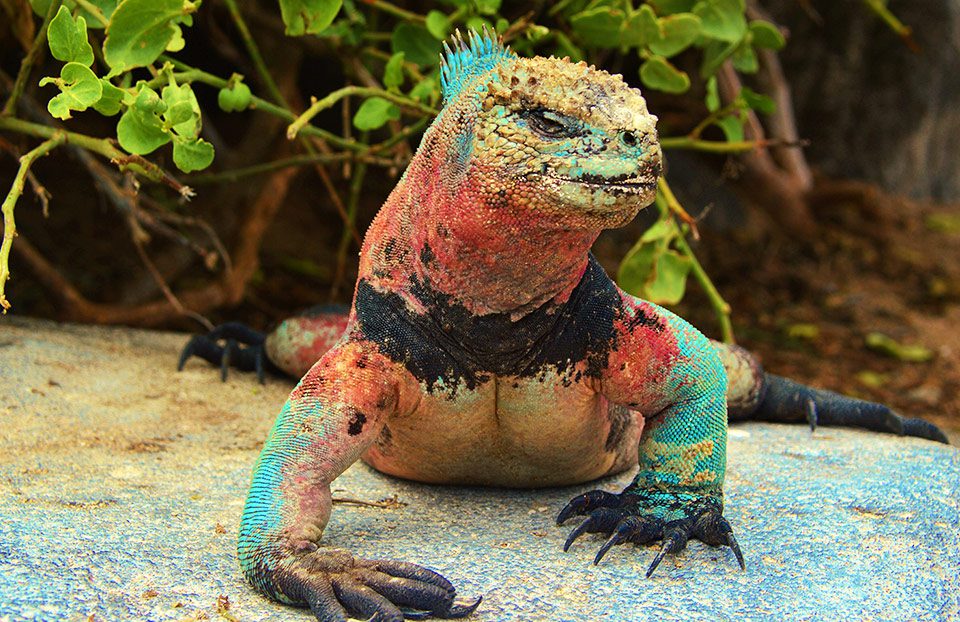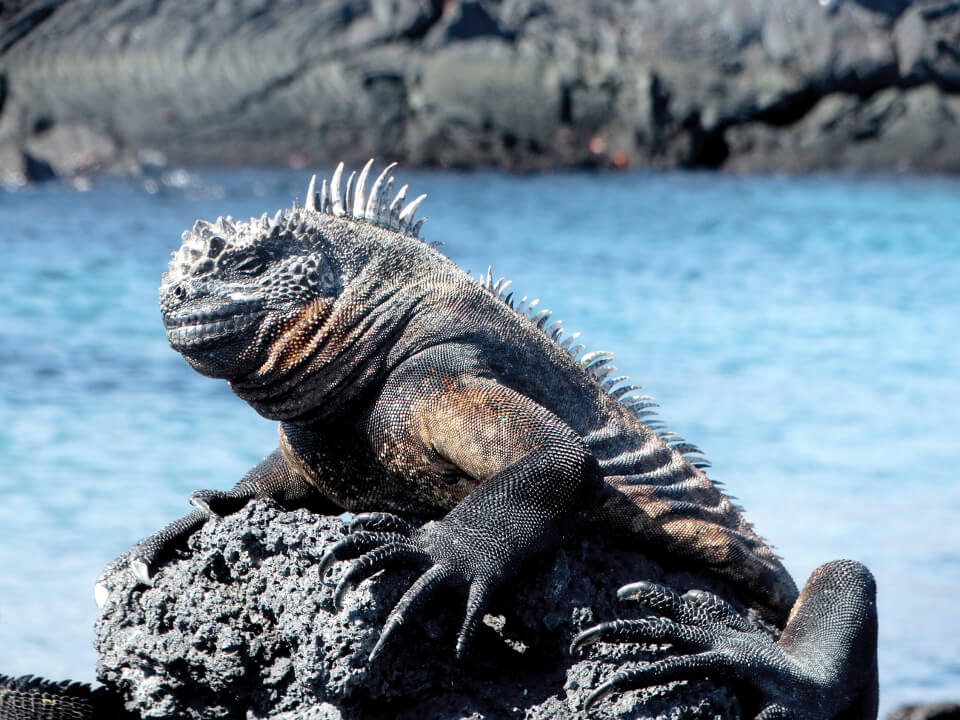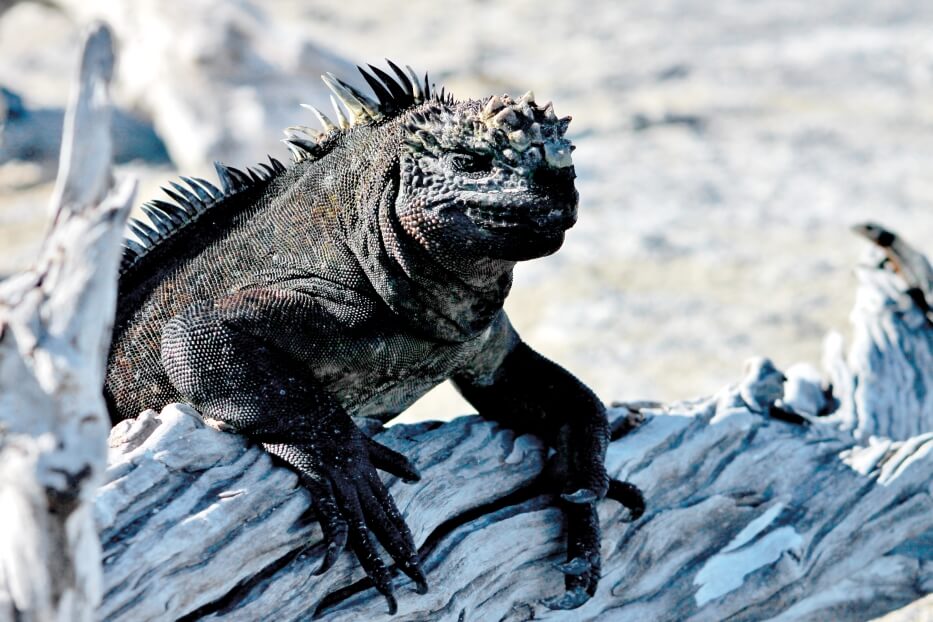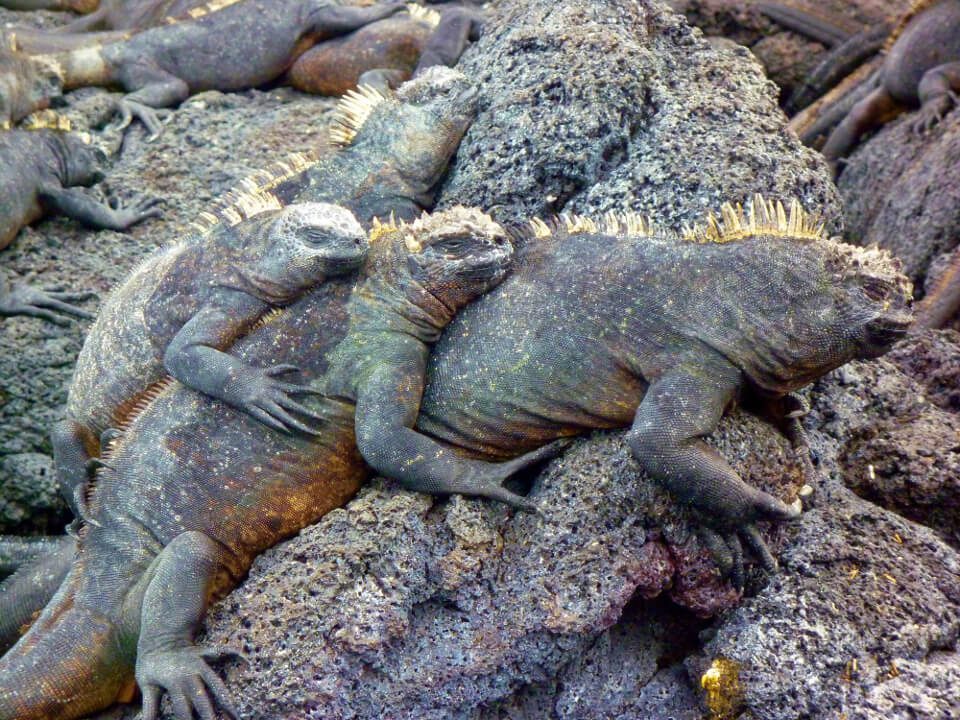Galapagos marine iguanas gather in enormous, greyish-black bunches on top of the lava rocks that cover the entire archipelago. Little sprays and streams of water shoot out of these dinosaur-like creatures’ noses atop this kaleidoscope of scales. Darwin believed that a mother could only be in love with her face and form. Still, genuine beauty, at least in the Galapagos, is in the fantastic adaptations these creatures have developed over the millions of years they have lived here. This is among the reasons Galapagos marine iguanas have earned a spot in our extensive 15 list of iconic animals.
TALK TO A DESTINATION EXPERT

Diego Zapata

Rosa Mena

Sandy Lara

Diego Zapata

Rosa Mena

Sandy Lara
Galapagos: marine iguanas
According to scientists, the modern marine iguana, which visitors can stroll with, is thought to have migrated into the archipelago many millions of years ago. Many theories exist on how these ancestors might have gotten to the islands on driftwood or other mainland debris swept away by powerful ocean currents. Since then, Galapagos marine iguanas have succeeded in dispersing throughout the many islands that make up the archipelago, diversifying and settling on the many stunning beaches they call home. As a result of their dispersal, they also underwent minor variations in appearance, occasionally resulting in striking alterations in hue. The most notable is that redder iguanas are frequently seen on Santiago Island, whereas greener iguanas dwell on.

The easiest way to identify a marine iguana is to look for signs of lateral flattening of the tail and a relatively flat, nearly square nose. Males and females differ primarily in pigmentation, with males usually maintaining a brighter tint and larger body size.

How far they’ve come in Galapagos: marine iguanas.
Galapagos marine iguanas are thought to have split from their ancestors some 5.7 million years ago, which accounts for some of the unique characteristics that set them apart from their cousins who live on land. The Galapagos marine iguanas’ ability to adapt to their “newish” environment is facilitated by such qualities, which are mainly advantageous to their swimming abilities. For example, their distinctively flattened tail facilitates underwater locomotion. It allows them to descend to the ocean floor, where they may graze on the algae that constitutes a significant portion of their diet. They can peel it off with more power because of their razor-sharp teeth and square noses, enabling them to get their mouths closer to the tenacious algae clinging to the underwater volcanic rock. They can even attach to submerged rocks in the face of solid currents thanks to their more extended claws.

Because they are cold-blooded animals, marine iguanas in the Galapagos have developed an excellent adaptation to cope with their lack of thermoregulation. To achieve this, they “charge up” in the sun’s warmth before going beneath (they usually need to boost their body temperature to 36°C because they frequently lose 10°C of heat when submerged) and repeat the procedure after feeding. The method they use to eliminate the excessive quantities of salt their systems haven’t yet acclimated to is another intriguing adaptation to their food and underwater activities. Their inclination to “sneeze” or seemingly “spit” out the salt from their blood via their nasal holes is quite ugly, but it is precisely what they do with that excess salt—better out than in. It comes out through specific glands that are part of their nostrils.
Don’t worry if you’re interested in this species and wondering when your Galapagos trip will allow you to see it; this extraordinary and rare species is visible on all our Galapagos Islands tours!


Javier Garcia

Eduardo Silva

Carolina Escobar
START PLANNING YOUR TRIP

Javier Garcia

Eduardo Silva

Carolina Escobar
Get in touch for more
CONTACT US


